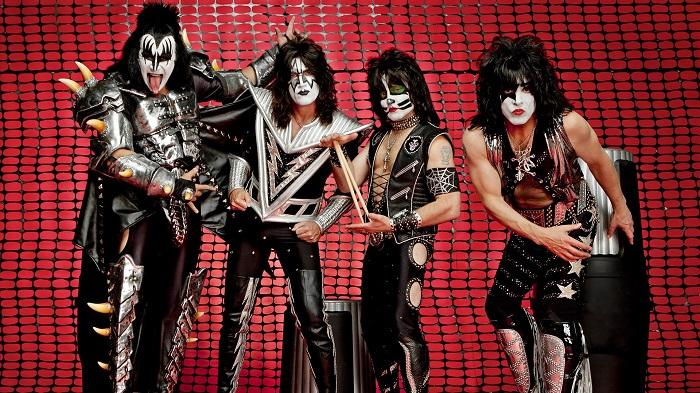Why Was Glam Metal Sometimes Associated with Excess and Decadence?

Glam Metal emerged in the late 1970s and rose to dominance in the 1980s. It combined heavy metal riffs with pop melodies, theatrical performances, and flamboyant fashion. Bands like Mötley Crüe, Poison, Ratt, and Bon Jovi became cultural icons. Yet the genre carried a reputation that extended beyond its music. It became linked with excess, decadence, and indulgence. This image came from the lifestyle of the musicians, the themes of the songs, and the larger culture of the time. Below is a detailed exploration of why Glam Metal was often tied to these ideas.
The Musical and Cultural Backdrop
The Rise of the 1980s Music Scene
Glam Metal developed during the height of MTV’s influence.
The music channel showcased bright visuals and exaggerated styles.
Bands competed for attention through big hair, makeup, and flashy videos.
This visual environment encouraged performers to adopt extreme images.
Decadence became part of the marketing strategy.
The Influence of Los Angeles
Los Angeles was the epicenter of Glam Metal.
The Sunset Strip became the main stage for new bands.
Clubs overflowed with loud shows, wild parties, and hedonistic energy.
The city itself symbolized glamour, temptation, and excess.
The environment reinforced the genre’s reputation for decadence.
The Image of Glam Metal
Fashion and Appearance
Bands embraced androgynous looks with makeup, hairspray, and spandex.
The visual style reflected rebellion against traditional norms.
Outfits were designed to shock, attract, and sell a larger-than-life persona.
The extreme image aligned with a culture of indulgence.
Fans interpreted the visuals as symbols of living without limits.
Stage Performances
Glam Metal concerts were theatrical and exaggerated.
Pyrotechnics, lights, and choreographed movements were common.
Shows highlighted spectacle more than subtlety.
The experience encouraged fans to associate the music with extravagance.
Excess became a key part of the performance identity.
The Lifestyle Behind the Music
Parties and Substance Use
Musicians often spoke openly about their partying habits.
Drugs and alcohol became symbols of the scene.
Bands portrayed themselves as living without restraint.
Media reports emphasized the chaos of backstage life.
This fueled the idea that Glam Metal equaled decadence.
Relationships and Sexual Culture
Lyrics often celebrated casual encounters and desire.
Groupies became a well-known feature of the scene.
Stories circulated about hotel destruction and promiscuous behavior.
The focus on pleasure reinforced the image of indulgence.
Fans and critics alike viewed this as proof of excess.
The Role of the Media
Music Videos on MTV
MTV gave Glam Metal global visibility.
Videos often depicted parties, romance, and luxury.
Cars, mansions, and attractive models filled the screen.
The visual language emphasized wealth and indulgence.
Viewers saw excess as part of the genre’s identity.
Magazine Coverage
Rock magazines highlighted the wildest stories of the bands.
Headlines described outrageous parties and scandals.
Interviews focused on reckless behavior more than music.
This coverage exaggerated the association with decadence.
The press and the bands fed into each other’s narratives.
The Themes in the Lyrics
Celebration of Pleasure
Many songs centered on fun, love, and desire.
Titles like “Girls, Girls, Girls” expressed direct indulgence.
Lyrics emphasized living for the moment.
Responsibility and restraint were rarely themes.
Music became a soundtrack for excess.
Escapism and Fantasy
Songs often created a fantasy world of endless pleasure.
Parties, nightlife, and luxury dominated lyrical content.
The music allowed listeners to escape ordinary struggles.
This escape reinforced the idea of decadence.
Fans embraced the fantasy as part of the appeal.
The Economic and Social Context
The 1980s Economy
The decade was marked by consumerism and materialism.
Wealth, fashion, and luxury defined popular culture.
Bands reflected and exaggerated these values.
Glam Metal became the musical expression of this culture.
Decadence was not only musical but cultural.
Rebellion Against Restraint
Glam Metal appeared after the punk movement.
Punk had celebrated anger and raw simplicity.
Glam Metal rejected restraint and celebrated spectacle.
This contrast highlighted its excessiveness.
The genre positioned itself as unapologetically indulgent.
The Decline of Glam Metal
Oversaturation of the Scene
By the early 1990s, Glam Metal had oversaturated the market.
Too many bands copied the formula of excess.
Audiences grew tired of the repetition.
Decadence turned into cliché rather than novelty.
The association with excess contributed to the decline.
The Rise of Grunge
Grunge emerged as a reaction to Glam Metal.
It emphasized authenticity, simplicity, and seriousness.
Fans turned away from Glam Metal’s extravagance.
Excess became a liability rather than an attraction.
The shift marked the end of Glam Metal’s dominance.
The Legacy of Excess and Decadence
Lasting Cultural Image
Even today, Glam Metal is remembered for its wildness.
Fashion, parties, and indulgence remain iconic images.
The association with excess is part of its legacy.
This reputation overshadows some of the musical contributions.
The cultural memory remains stronger than the details.
Influence on Later Genres
Later rock and metal bands drew lessons from Glam Metal.
Some copied its theatrics while avoiding its reputation.
Others rejected excess and focused on authenticity.
The association with decadence shaped future directions in music.
Glam Metal’s excess became both warning and inspiration.
Conclusion
Glam Metal was more than just music. It was a cultural phenomenon shaped by image, lifestyle, and context. The association with excess and decadence came from many sources: the wild parties, the substance use, the lyrics, the stage shows, and the media coverage. It also reflected the materialistic values of the 1980s. While the genre eventually declined, its reputation for indulgence remains. The image of excess is not only remembered but celebrated in certain ways. For some fans, it was liberation. For critics, it was corruption. Yet in every case, the association with excess became inseparable from the identity of Glam Metal.
- Art
- Causes
- Crafts
- Dance
- Drinks
- Film
- Fitness
- Food
- Giochi
- Gardening
- Health
- Home
- Literature
- Music
- Networking
- Altre informazioni
- Party
- Religion
- Shopping
- Sports
- Theater
- Wellness


